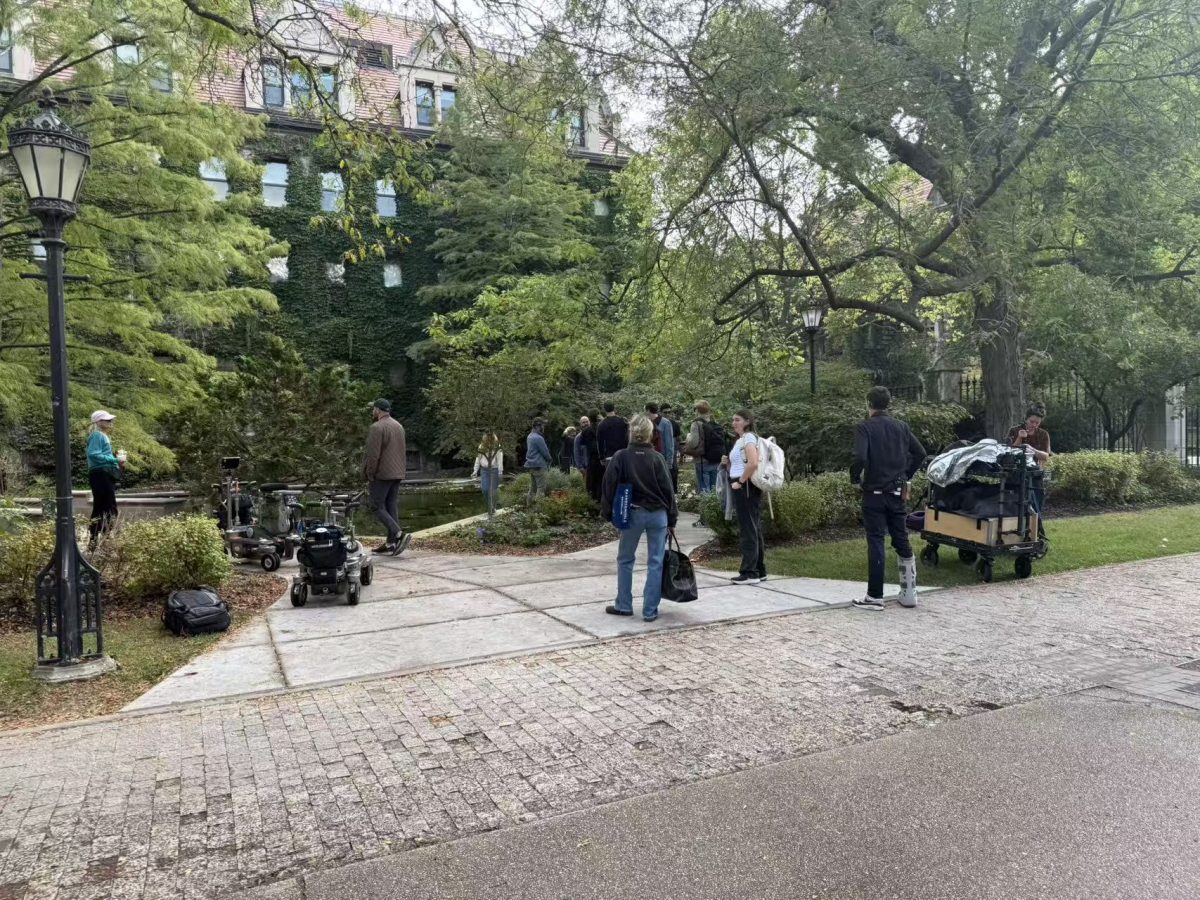About 40 Hyde Park residents attended an outdoor meeting held by People of Woodlawn (POW) to discuss their concerns as Woodlawn residents last Thursday. Among their top priorities were affordable housing, youth programs, better retail options, activities for seniors, and “no more condos”—a slogan printed on POW buttons and flyers.
A main topic of discussion was the New Communities Program (NCP), a MacArthur Foundation grant for the revitalization and development of urban areas. Woodlawn is one of 14 Chicago neighborhoods to receive the grant, care of the University of Chicago and two area nonprofits, the Woodlawn Preservation and Investment Corporation (WPIC) and The Woodlawn Organization (TWO). Community activist Lonnie Richards, a Woodlawn resident for 20 years, claims that the NCP does not represent the needs of most Woodlawn residents. “The problem with NCP is the input,” he said. Earlier in the NCP process, Richards argued, “They brought the whole community together to get ideas, but now no one knows what’s going on. When they implement it, we’re not a part of it.” Most attendees said they were unaware of NCP prior to the meeting on Thursday.
Richards also expressed dismay at TWO’s attempt to remove more than 200 tenants from a subsidized housing complex near 62nd and Kimbark Avenue, Woodlawn Redevelopment #2. Tenants argued that TWO has failed to give the required legal notice to building residents and is attempting to replace the subsidized units with condos, possibly in violation of TWO’s contract with the Department of Housing and Urban Development. “They’re trying to push the renters out of Woodlawn,” complained Wardell Lavendar, a retiree and lifetime resident of Woodlawn.
Matt Ginsberg, University alumnus and member of the Student-Tenant Organizing Project (STOP), a student group working in partnership with POW, voiced further concerns regarding TWO’s intentions. “If they’re tearing down subsidized housing over here, how can we trust them to do what’s right for the neighborhood?” he said.
POW is currently developing an alternative plan for the neighborhood based on small house meetings. At Thursday’s meeting, Ginsberg and Lavendar asked residents to volunteer to host meetings in their private residences for 5 to 10 people, where residents could discuss the changes they desire in Woodlawn. During the meeting, residents spoke informally about some of these concerns. Jerome Simmons, a Woodlawn resident since 1991, emphasized the importance of youth programming. “Maybe a work center to help them develop skills,” he mused. “These kids are under stress and they don’t have anywhere to express their emotions. We could help them let it out there, instead of on the street, in gangs.”
Patricia Doss, who has lived in Woodlawn for nine years, said she wants better retail options in Woodlawn. “We need more grocery stores around, closer than where they are now,” she said. She also expressed concern about the neighborhood demographic. “Woodlawn should be a mixture-low-income people and people with money—because I am not in the bracket to get a condo,” she said.
The NCP’s website lists many of these same issues as priorities for Woodlawn, including mixed-income housing. The website, however, states that “most communities desire more options at the high end of the housing spectrum,” in balance with “good, affordable rental housing to protect against residents being priced out of their neighborhood.”
Alex Goldenberg, a third-year in the College active in STOP, said he thinks the POW plan will be more representative of the community’s concerns and demands than that produced by NCP. He said that as NCP’s plan is announced in May, students should demand University accountability to Woodlawn residents. “As students of the University, we have a moral responsibility to understand the effects our institution has on the surrounding neighborhood,” he said. “Our neighbors to the south are some of the most marginalized and disenfranchised people in the city.”
Despite their complaints, residents at Thursday’s meeting expressed affection for the Woodlawn community. Lavendar fondly recalled the thriving shopping district on State Street in the 1950s, when “you didn’t have to go to the Loop to purchase anything.” Doss spoke of her neighbors and her children’s friendships: “We’re settled here, and we like where we are. Don’t forget about us.”








